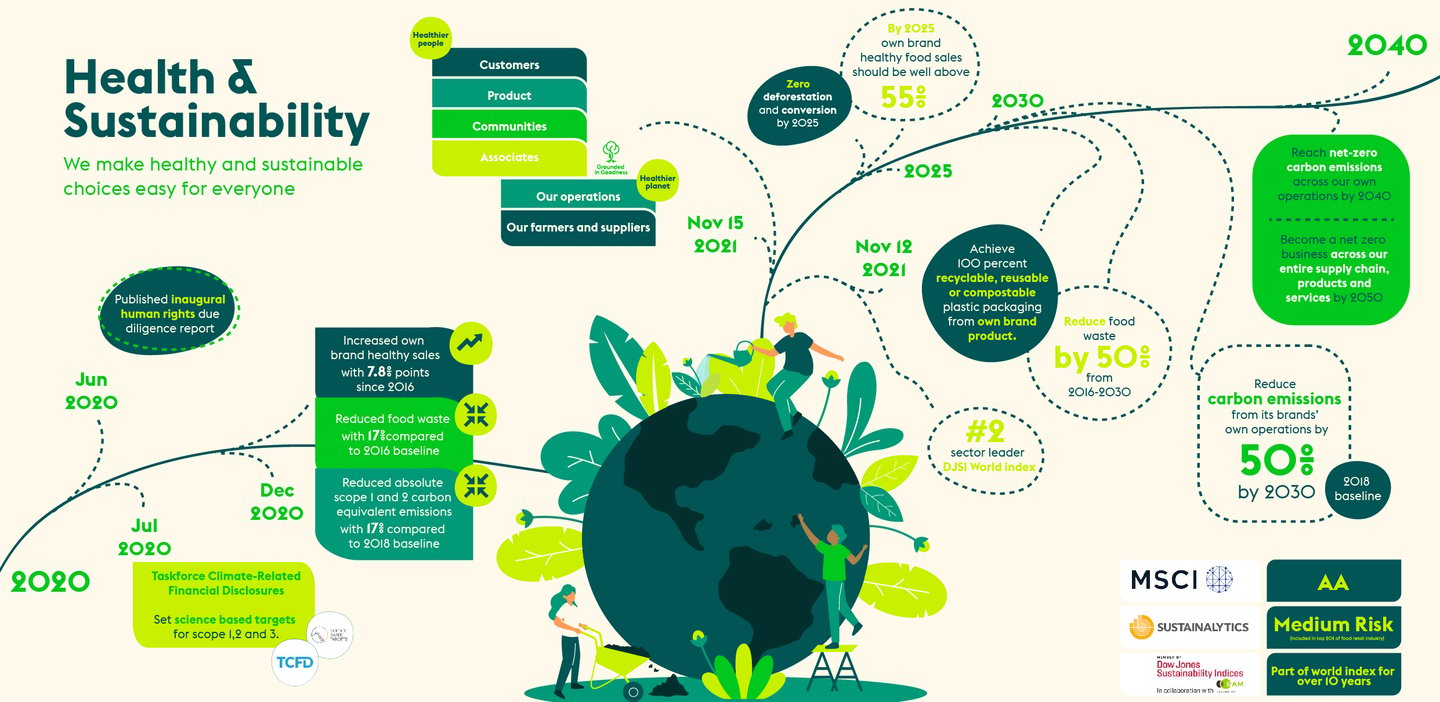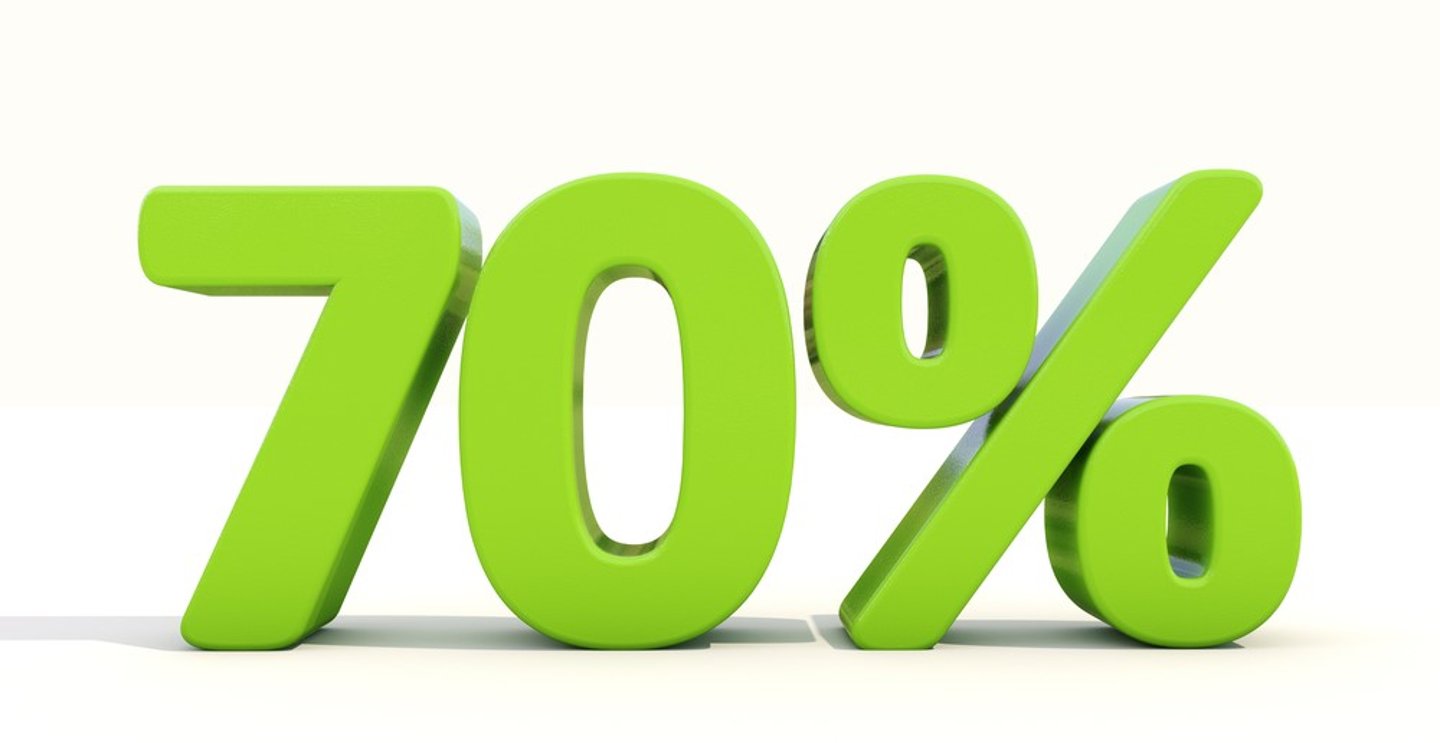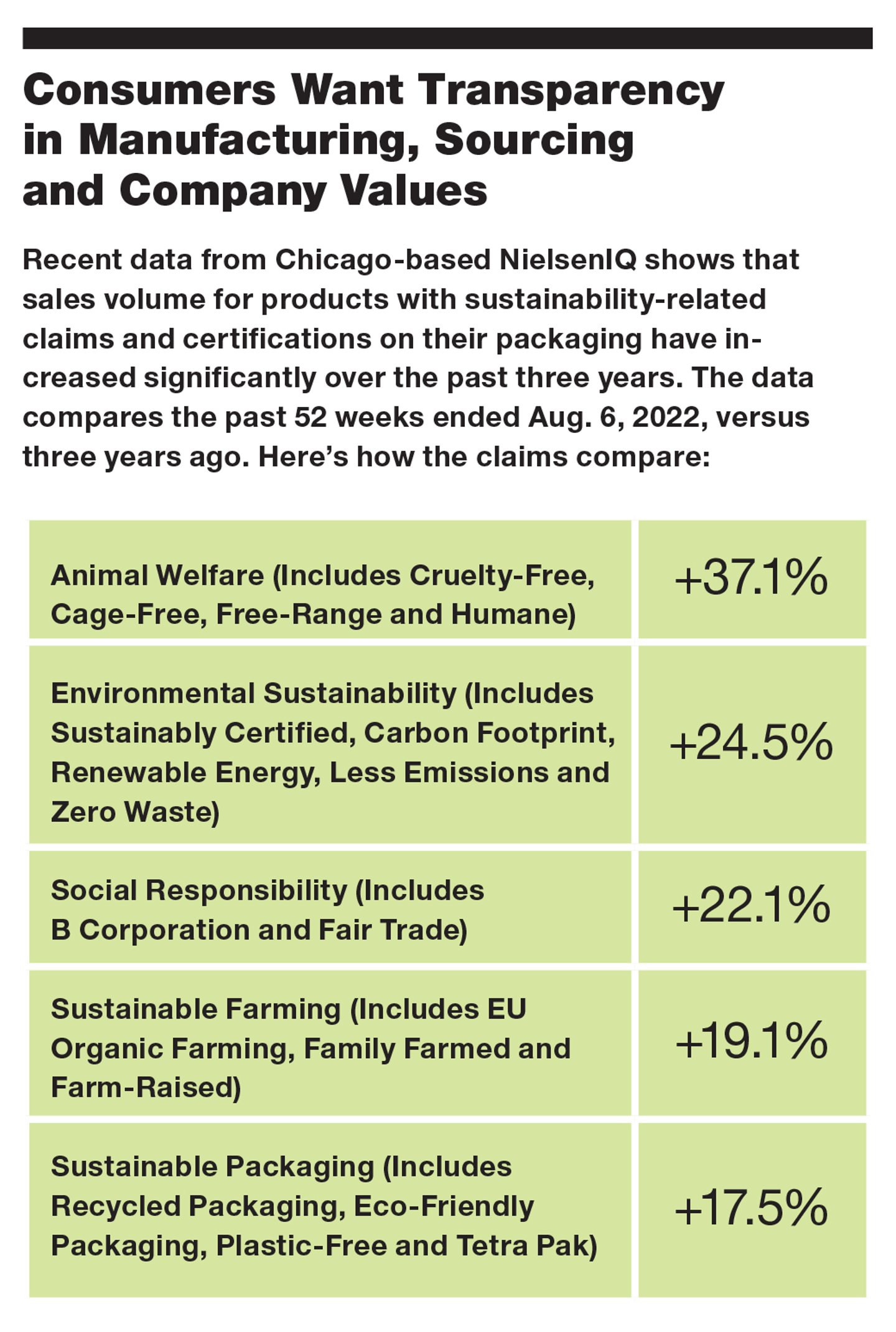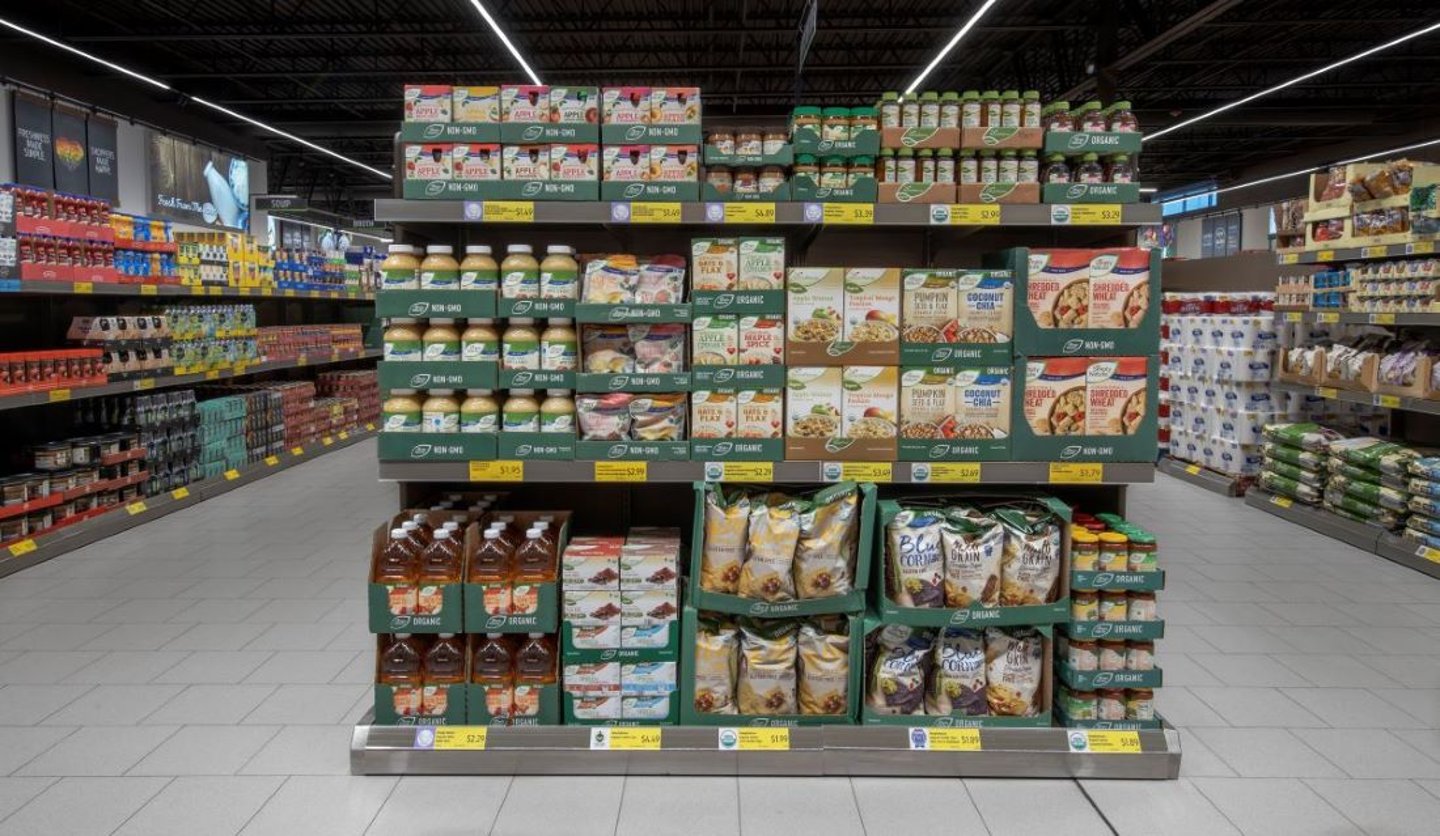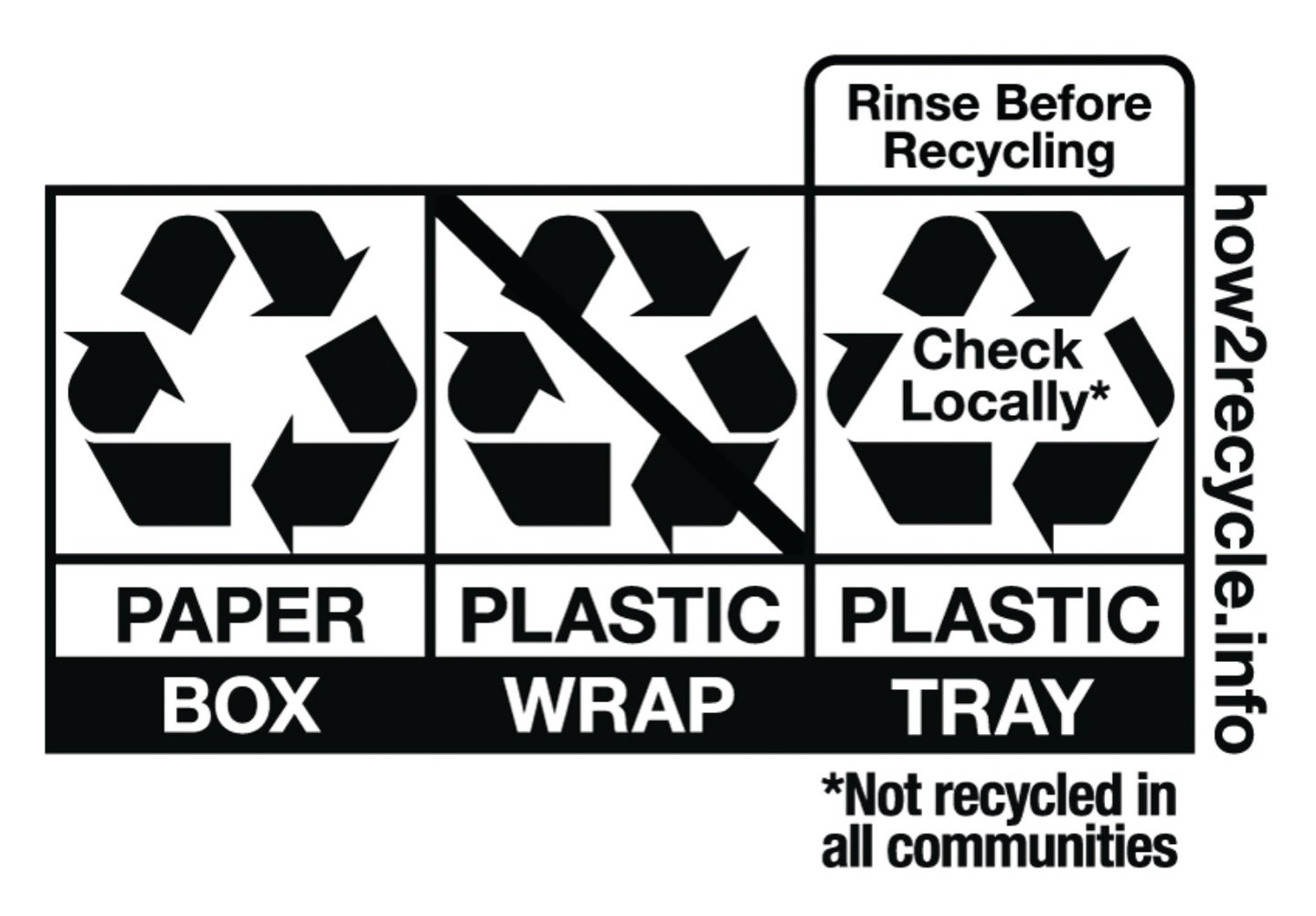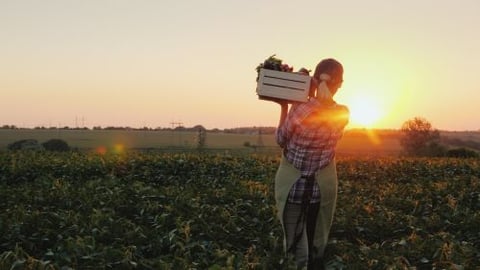Grocery's Sustainability Scorecard: The Eco-Friendliest Moves
More Sustainability Coverage
Fifteen years ago, Progressive Grocer published its first-ever “green” issue, with the cover headline “Green is the New Black.” At that time (early 2007), sustainability was just becoming a mainstream trend in U.S. business as companies were beginning to recognize that it behooved them to invest in more earth-friendly practices and products to ensure a healthier environment, keep their shareholders happy and, especially, to reach consumers who were supporting these noble ideas with their wallets.
Fast-forward to 2022, and the grocery industry has started to rack up some rather impressive achievements while setting some major commitments related to sustainability. Of course, the industry has been gradually pulled along by government regulations that place more emphasis on climate change, but a growing number of retailers have recognized that what’s good for the environment is often good for business, too.
Led by large mass-market retailers like Walmart and Target, which often have to answer to their concerned shareholders — as well as smaller chains with more environmentally progressive European connections, like Aldi and the regional U.S. banners belonging to Ahold Delhaize — a number of grocers have taken some major steps in areas such as energy efficiency, waste from packaging and surplus food, sourcing, and transportation and shipping. They are essentially in the process of creating more sustainable, less wasteful supply chains from farm to fork, even getting their suppliers on board.
Some even see it as a competitive advantage: Amanda Nusz, SVP of corporate responsibility at Minneapolis-based Target, alludes to this idea when talking about the company’s new Target Forward program: “We want our guests to turn to Target first when they think about sustainability.”
Looking ahead to the remainder of 2022 and beyond, Progressive Grocer’s Sustainability Scorecard doesn’t set out to rank individual companies, but rather highlights some of the key initiatives being planned by the country’s most forward-thinking retailers, as stated in their annual reports; ESG (environmental, social and governance) or sustainability reports; or elsewhere.
Every company seems to be on a slightly different part of its sustainability journey, although most have similar objectives. Regardless of where they are on this journey, each step taken seems most definitely worth it in terms of working toward a healthier environment, more content consumers, and, quite often, cost savings in the process.
A Universal Mission That Requires Action
Before we begin looking at retailers’ major sustainability plans, it’s fair to ask the question, how much responsibility do grocers really have when it comes to the environment? New York-based global consulting firm McKinsey & Co. estimates that the food system currently accounts for more than 30% of global greenhouse-gas (GHG) emissions, although grocers’ direct contributions to these emissions is relatively low, accounting for about 7% of the total food value chain.
Still, McKinsey advises that retailers would be wise to take a leading role in moving the entire industry toward a more sustainable future. In an article recently highlighted on the firm’s website, called “Decarbonizing Grocery,” the authors note that “the grocery sector has a unique opportunity to become the driving force for decarbonization of the entire food system.”
Simply put, according to McKinsey, “In the fight against climate change, the time is ripe for grocers to move from ‘playing defense’ (risk mitigation) to ‘playing offense’ (targeted value creation) — not only to help protect the planet, but also to strengthen their businesses.”
Counting carbs (no, not those carbs, but carbon dioxide, or CO2, being the primary greenhouse gas emitted through human activities) seems to be a good place to start as retailers plot out their sustainability journeys. This requires not only taking a close internal look at what kind of GHG emissions a company is responsible for, but also seeking outside help to consult and give oversight.
According to the McKinsey article, two terms are most commonly used by companies when measuring carbon emissions: “carbon neutrality,” which is commonly used to refer only to CO2 and is often associated with the practice of offsetting emissions rather than reducing them, and “net zero,” which essentially refers to all GHG emissions and entails a focus on rapid, real emission cuts. The latter requires companies to set quantified targets, including for indirect emissions across their entire value chains.
Perhaps not surprisingly, Albertsons and other large publicly owned grocery chains like Ahold Delhaize, Target and Walmart have set goals to reach net-zero emissions, most of them by 2040.
Other chains are looking at reducing CO2 as a more realistic starting point.
Energy Conservation in Stores, and Renewable Energy
One of the main areas that falls into scopes 1 and 2 is energy consumption in stores, which can be reduced significantly by modernizing lighting, refrigeration, heating, ventilation, air conditioning and cooling. This will most certainly continue to be a major focus area for grocers in the next few years.
Ahold Delhaize, with global headquarters in Zaandam, Netherlands, shared in its “2021 Annual Report” that more than 40% of its carbon emissions come from leaks in refrigeration systems. While it seems possible to reduce emissions by approximately 60% at a neutral cost, initiatives like replacing refrigeration systems are more expensive and “will require significant capital expenditure at an earlier stage than [we] initially planned,” the company noted.
The retailer is prioritizing energy efficiency as it builds and remodels stores, and is installing energy-efficient equipment such as LED lights; doors on cabinets, heat recuperation; heat pumps; CO2 refrigeration systems (which not only reduce emissions, but are also more energy efficient than conventional refrigerators); and improved insulation. It’s also retrofitting existing refrigeration systems with more eco-friendly alternatives, while working to further control and reduce refrigerant leaks.
Meanwhile, the company is accelerating the switch to renewable power, with a number of its brands planning to use 100% renewable electricity by 2023. (To procure renewable energy, retailers can turn to renewable energy credits, look into solar power or other green energy, or look at power purchase agreements.)
Issaquah, Wash.-based warehouse club operator Costco has had success using display case shields to reduce energy use in its U.S. operations. The shields are employed during hours that the warehouses are closed to reduce power use while maintaining product temperature. As a result, there’s less load on the refrigeration system, with improved product temperature maintenance.
Batavia, Ill.-based Aldi US, which has sustainability aspirations built into its business model, now has nearly 500 stores using refrigerants that have near-zero global-warming potential, and the discount grocer estimates that 51% of potential carbon emissions have been saved due to its continued transition to natural refrigerants and phase-out of harmful refrigerants. Meanwhile, the growing chain is testing a smart-building automation system to minimize wasted energy with the lowest possible emissions.
In 2021, Aldi continued to purchase green electricity to cover 100% of its energy consumption and introduced its first company wind turbine, in Dwight, Ill. The company installed solar rooftop panels on additional buildings, bringing its total to more than 120 stores and 12 distribution centers. For 2022, it plans to install solar panels on an additional 60 stores and one new distribution center.
Seattle-based Amazon claims to be the world’s largest corporate purchaser of renewable energy, and is on a path to powering operations with 100% renewable energy by 2025, five years ahead of its original target. The online retailing giant now has 134 utility-scale wind and solar projects and 176 on-site solar projects that supply renewable energy to its corporate offices, fulfillment centers, data centers and physical stores, including some Whole Foods units.
Target, which just released its first ESG report, is committing to source 60% of its electricity from renewable sources for its operations by 2025 — and that number jumps to 100% by 2030. Meanwhile, the company recently retrofitted its first net-zero-energy store, which is expected to generate up to 10% more renewable energy per year than needed to support its operations (the energy surplus can be transmitted back into a local power grid). The Vista, Calif., store will generate renewable energy through 3,420 solar panels across its roof and carport canopies. Even its HVAC system will be powered through solar energy. The store and its new features will inform Target’s investments in new stores and remodel programs, according to the company.
Lakeland, Fla.-based Publix Super Markets, a founding partner of the U.S. Environmental Protection Agency’s GreenChill program, now has 77 stores that have earned Silver GreenChill certifications, 28 stores with Gold GreenChill certifications and one Platinum Certified store.
Sunbury, Pa.-based Weis Markets, another regional player with a strong focus on sustainability, has turned to nuclear-generated electricity to reduce GHG emissions from its electricity use compared with prior years. The retailer has now expanded its use of zero-emissions nuclear-generated electricity to 67% of its electricity usage.
Like Publix, Weis has had numerous stores achieve the annual GreenChill certification. Notably, its store in Hanover, Pa., has earned its 13th consecutive GreenChill certification — an EPA record.
Reducing Plastics and Other Packaging Waste
Waste, whether from plastic bags, excess or unrecyclable packaging, or even unused food, falls under the scope 3 emissions that grocers track, and has also been gaining more attention in recent years.
Perhaps one of the most publicized “green” trends over the past decade or so is the switch to reusable shopping bags, largely brought on by local legislation. A number of retailers reacted by discouraging, or even outright banning, single-use plastic bags in their stores. That trend was followed by bans on plastic straws and other in-store packaging. While this may not be the biggest trend — or the one to make the most difference in regard to the environment — going forward, retailers are expanding their actions to other parts of the store.
Austin, Texas-based Whole Foods, which claims to have been the first U.S. grocer to ban plastic grocery bags at checkout in 2008, is now offering smaller produce pull bags, and has eliminated all Styrofoam (polystyrene) meat packaging trays in its stores in the United States and Canada, as well as removing all Styrofoam from its foodservice packaging.
Aldi, which has never offered the single-use plastic checkout bags commonly used by other retailers, has traditionally given its customers the option to purchase multiuse plastic bags (the thicker plastic bags with handles), or paper bags if needed. Now the retailer is focused on eliminating the multiuse plastic bags sold in its checkout lanes by the end of 2023. It will continue to sell paper bags (unless restricted locally) or reusable shopping totes, and will encourage customers to bring their own bags.
Joan Kavanaugh, VP of national buying at Aldi, tells Progressive Grocer that the retailer is also exploring alternative options for plastic produce and meat bags in its stores. “We’re proud to be the first major grocery retailer with nearly 2,200 stores nationwide to make a commitment of this magnitude and will continue trailblazing the grocery retail industry when it comes to limiting plastic waste,” she says.
Ahold Delhaize USA also has various initiatives in place to help reduce its in-store plastic use. In 2021, its Giant Co., Hannaford, and Stop & Shop stores transitioned their own-brand commodity fresh chicken program from EPS (expanded polystyrene) foam trays to more easily recyclable PET rigid trays. Food Lion and Giant Food are scheduled to transition their commodity chicken programs away from foam trays throughout this year. The Giant Co., Giant Food, Hannaford, and Stop & Shop also transitioned their Nature’s Promise organic fresh chicken programs from EPS foam trays to PET rigid trays.
Publix, for its part, wants to let its shoppers choose what bags they use, but it still continues to encourage reusable bags and has recycling stations for plastic/paper bags in its stores. In fact, the retailer turns its recycled bags into plastic pellets that are sold to manufacturers for use in new plastic bags, fencing, benches and more.
Further down the supply chain, Publix (as well as other retailers) is paying closer attention to packaging during shipping. For example, when Publix began to use a steadier pallet to stack product in its Lakeland dairy plant, the company found that it no longer needed the cardboard slip sheets it used to protect the ice cream. That change saves nearly 1 million square feet of cardboard each year, according to Publix.
In another innovative shipping move, Publix’s neighbor up north, Rochester, N.Y.-based Wegmans, has started using newly designed RPCs (returnable plastic containers) to get fresh seafood from suppliers to its stores, eliminating the need for Styrofoam coolers. Wegmans claims to be the first retailer to launch such a program for seafood. It worked with Atlanta-based Tosca to get the smaller crates that would be suitable for the seafood team’s needs.
Another way that more grocers are cutting down on plastic and other in-store waste is through their store-brand packaging.
UPM Raflatac, a supplier of label materials with global headquarters in Helsinki, is seeing an uptick in interest from retailers in regard to recycling. Brinder Gill, sales director at the company, notes, “We work with numerous retailers and packaging suppliers on initiatives for packaging redesign for their in-house brands to enable recyclability, where labels play an important role.”
Most of the retailers that are prioritizing sustainability have set a goal of having all of their store-brand packaging be reusable, recyclable or compostable by 2025.
Aldi has already reduced its use of plastic and increased the recyclability of its packaging so that 62% of its Aldi-exclusive packaging is now reusable, recyclable or compostable. In the produce department, the company has removed 1 million trays from its asparagus packaging and is currently testing a reduced-plastic packaging format for produce items. Aldi also managed to remove 37 tons of material by transitioning its product labels to more sustainable alternatives.
Aldi’s Kavanaugh notes that the company has “a lot of leverage when it comes to the packaging of products sold on Aldi’s shelves,” since more than 90% of its products are Aldi exclusives. “We can implement changes quickly and efficiently throughout our product mix,” she says.
Cincinnati-based Kroger, for its part, has taken a fresh approach to packaging with a reusable alternative. Last year, it became the exclusive U.S. grocery retail partner for Loop, from Trenton, N.J.-based TerraCycle, and started bringing popular brands in reusable packaging to customers in a pilot during its third quarter. The program has now expanded to more than 20 stores.
Target, meanwhile, launched an initiative called Target Zero earlier this year, which empowers guests to easily shop for products with packaging designed to be refillable, reusable or compostable, or made with recycled content or plastic alternatives. By 2025, Target expects to offer two circular own brands, and by 2040 it plans for 100% of its own brands to “be designed for a circular future.”
In the online retailing space, Frustration-Free Packaging is Amazon’s flagship program offering more sustainable packaging that’s easy to open, fully recyclable and capable of shipping without additional packaging protection. By the end of 2021, more than 2 million products qualified, and Amazon estimated that this packaging change avoided 30,000-plus tons of plastic across North America in 2021.
One other major trend in own-brand packaging is that more retailers are adding communications — namely, the How2Recycle logo from the Charlottesville, Va.-based Sustainable Packaging Coalition — to remind their shoppers to recycle.
By the end of this year, Albertsons’ and Walmart’s own-brand packaging will feature the How2Recycle label on 100% of their U.S. private-brand food and consumable products.
Aldi, which has completed the addition of the How2Recycle logo on all of its Aldi-exclusive food and nonfood everyday items, also offers its shoppers sustainable “Aldi Finds,” including reusable straws and reusable sandwich/snack bags.
Tackling Food Waste
In addition to addressing waste in packaging, many grocers are paying more attention to food waste. While virtually every food retailer across the country has contributed to food banks like Feeding America for a long time, a few of the greenest-minded are revving up their efforts to avoid landfills.
At Ahold Delhaize USA, that means more innovative operations such as working with restaurants that cook with unsold food, or Carlisle, Pa.-based Giant Co.’s chain-wide rollout of Flashfood — an app-based digital marketplace offering shoppers savings on foods approaching their expiration dates. It also means designating food no longer suitable for human consumption to be recycled in other ways, among them animal feed production, green energy facilities or industrial uses.
Meanwhile, Scarborough, Maine-based Hannaford, another Ahold Delhaize USA brand, this year became the first large-scale grocery retailer across its New England and New York markets to donate or divert all food waste, sending no food at all to landfills.
Aldi aims to achieve zero net waste in its operations by 2025 by diverting 90% of its waste from landfills through recycling, donation and organic recycling programs. The retailer has already diverted 74% of operational waste company-wide.
Costco and Whole Foods are among the retailers that are “upcycling” food that doesn’t sell. Costco uses extra cashews from its whole nut program in Kirkland Signature products such as Cashew Clusters and Protein Bars, while unsold rotisserie chickens are made into deli entrées. Whole Foods uses damaged/bruised produce in its prepared foods and bakery, and includes unused seafood in soups and other recipes.
Kroger continues to donate surplus food through its Zero Hunger | Zero Waste food rescue program, and aspires to increase retail donations of fresh produce, deli and dairy items and have 100% of its its stores participate.
Publix managed to divert 28,000 tons of food waste byproducts from its manufacturing plants in 2021, including whey from yogurt and cottage cheese from its dairy plant, which the company sent to farmers to feed their livestock, as well as scraps from the bakery that were processed into animal feed.
Green Streets
Quite a few grocers have made headlines in recent years with the news that they’ll start using electric vehicles or alternative fuels in transportation. Others are embracing reverse logistics and experimenting with new technology to cut down on miles traveled. Transportation is just one more area in which they can make a real impact on their scope 3 emissions.
According to Ahold Delhaize USA, its banners are converting both their light and heavy transportation fleets to zero-carbon alternatives, including battery electric vehicles (BEVs), and are also leveraging route optimization technology and improving fill mechanism to reduce overall energy use.
Amazon, which has been a leader in this area, already has a fleet of more than 3,000 electric delivery vans and other zero-emission vehicles in Europe. Meanwhile, the company has delivered more than half a million packages throughout North America using electric vehicles. In July, Amazon rolled out custom delivery vehicles from Irvine, Calif.-based Rivian to more than 12 U.S. cities, with plans to expand that number to thousands in more than 100 cities by the end of this year.
Walmart, another early tester of electric vehicles, is purchasing 4,500 all-electric delivery vehicles from Torrance, Calif.-based high-tech advanced mobility company Canoo, which will be used to deliver online orders.
Wegmans is committed to the annual reduction of 1.25 million gallons of diesel by focusing on alternative fuels, electrification, and reducing food miles through partnerships with East Coast organic farms.
Costco has homed in on reverse logistics to cut down emissions, and last year began an electric tractor pilot. Its business delivery fleet continues to expand the company’s Truck of the Future initiative, aimed at maximizing its fleets’ efficiency.
Last but not least, a number of grocers, including Costco, Kroger, Publix, Target and Whole Foods, now offer electric-vehicle charging stations at their stores so that customers using electric vehicles have a place to charge up after they purchase groceries.




